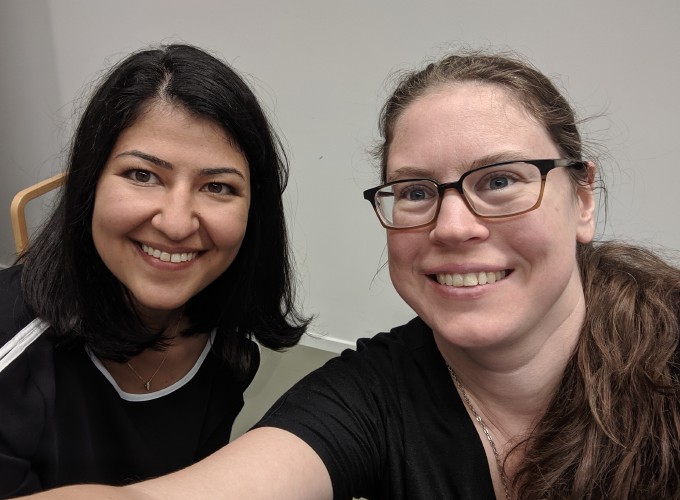A great strength of this project is how we combine both more traditional and more digital forms of lexical semantics research. Whenever we have a chance to meet, we realize how much we all have to gain by intertwining our perspectives and knowledge. This time, Nina and Susanne got together in Gothenburg for two days, and Richard joined our first day. We talked about many things - for example:
What is meaning? At the moment, word vectors treat meaning as (extant in the corpora) use. Is there meaning to a word apart from its use? And while current methods are limited by the available data, future methods will be able to utilize mulit-modal information, text is extended with tone, facial expressions, images, sound, smell and so on. With such data, we might be able to tease apart denotation from connotation, and determine that while the core meaning of horse has stayed stable (a horse is an animal with four legs, etc, and most of us would be able to pick a horse from a range of other animals), the use of the horse as a means of transportation and its central use in agriculture has radically changed. So, can we say that the horse is stable or changing in meaning? Today, meaning can almost only be modeled as usage, but the future has much more in store for us!
Inspired by the PhD thesis of G Rundblad (1997) on watercourse nouns in English, we started thinking about what happens to words when an entire lexical field collapses - words disappear, previous detailed small differences in meaning are no longer important. This is lexical semantic change when we see change in both meaning and reference. More on this will come!
We also met up with lexicographers to discuss where to find digitally available data on when Swedish words and senses first appeared. The lexicas on https://svenska.se/ are a good starting point. SAOB is a great lexicon on word meanings, but for a simple list of words and their earliest attestation, SAOB is too complex. SO (Svensk Ordbok) which tries to cover the middle ground between SAOB and the word list SAOL is a good alternative. We can also recommend, as long as it is available, a “backdoor” into the old user interface to SAOB, where much more detailed searches are possible: the now deprecated OSA interface http://www2.saob.se/osa/index.phtml .
One of our major concerns is validation - we need high quality studies on lexical change that the word vector approach is validated on. To that end, we came up with five different student projects for Stockholm University’s autumn course in Linguistics Project Work, all about language change.
All in all we had a very inspiring meeting, and are looking forward to the ACL workshop! See you in Florence!
Reference
Rundblad, G. (1997). Shallow Brooks and Rivers Wide : A Study of Lexical and Semantic Change in English Nouns Denoting Watercourse (PhD dissertation). Stockholm University, Stockholm. Retrieved from http://urn.kb.se/resolve?urn=urn:nbn:se:su:diva-61934

